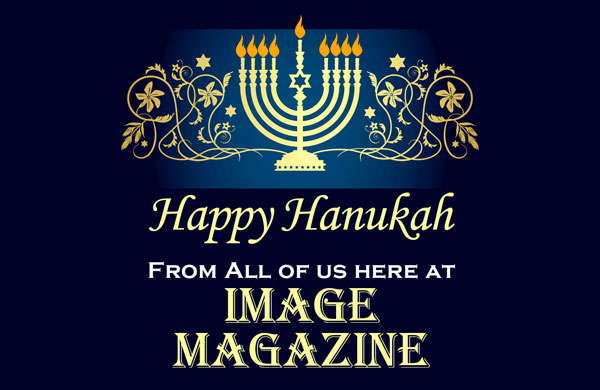
Celebrating Israel’s Holiest City
Yom Yerushalayim — Jerusalem Day — is the most recent addition to the Hebrew calendar. It is celebrated one week before the eve of Shavuot. Although Jerusalem has been considered the capital city of the Jewish people since the time of King David—who conquered it and built it as the seat of his monarchy—there was never a special day in honor of the city until the Israeli army took over the ancient, eastern part of the city on the third day of the Six-Day War in June 1967.
Jerusalem was divided during the War of Independence and 19 years later was reunited as a result of the 6-Day War.
The battle of Jerusalem began on the morning of June 5, 1967 when the Jordanians opened fire along the entire cease-fire line. By that afternoon the Jordanians occupied the Governor’s Palace.
The Central Command of the Israeli Army tore through the enemy positions of “Har Adar” and “Abdul Aziz” and conquered “Nebi Samuel”.
By the morning of June 6 this force reached the Jerusalem-Rammalah road and stormed “Tel-El” and “Givat HaMivtar.” In addition, a paratroop brigade was moved up. Its instructions were to open the way to Mount Scopus and the Rockefeller Museum in order to position themselves to break through to the “Old City” of Jerusalem on very short notice.
This force cut through the frontline of the town and soon the way to Mount Scopus was cleared and the northeast section of Jerusalem was liberated.
On June 7th the General Staff issued the order to liberate the “Old City.” The Central Command activated the paratroop brigade that had conquered the Mount of Olives and the Mount Scopus ridge. These troops broke through to the “Old City” by way of the “Lions’ Gate” and hoisted the Israeli flag over the Western Wall.
 Following the 6-Day War victory, on June 27, 1967, the government presented the Knesset with three law proposals. These proposals determined the effective unification of Jerusalem and sanctioned the application of Israeli law in the entire area of the unified city. The municipal boundaries of the city were altered and its area was increased threefold. At the same time, a law was adopted that enabled free access to the holy places by the members of every religion. In 1980, the Basic Law: Jerusalem was adopted. This law determined that Jerusalem was the capital of Israel and the location of all state authorities.
Following the 6-Day War victory, on June 27, 1967, the government presented the Knesset with three law proposals. These proposals determined the effective unification of Jerusalem and sanctioned the application of Israeli law in the entire area of the unified city. The municipal boundaries of the city were altered and its area was increased threefold. At the same time, a law was adopted that enabled free access to the holy places by the members of every religion. In 1980, the Basic Law: Jerusalem was adopted. This law determined that Jerusalem was the capital of Israel and the location of all state authorities.
On May 12, 1968, the government, decided to make the 28th of Iyar the symbolic holiday, Jerusalem Day , a day that symbolizes the continued historical connection of the Jewish people to Jerusalem. Thirty years later, this holiday became anchored in the law: On March 23, 1998, the Knesset passed the second and third readings of the “Jerusalem Day Law,” which determined that the date that Jerusalem was liberated during the 6-Day War was a national holiday.
After the 6-Day War the city and its environs underwent an intensive and unprecedented process of restoration and development. Institutions were built, entire new neighborhoods were established and an extensive system of roads and transportation infrastructure was constructed.
Ten new neighborhoods were built. This development enabled a significant increase in Jerusalem’s population and the absorption of considerable numbers of new immigrants. Today, according to the Central Bureau of Statistics, Jerusalem’s population stands at about 681,000.
Jerusalem, the capital of Israel, has become a large and expansive city. It stands as an inspiration not only to residents of Israel and the Jewish people but also to the entire world. Jerusalem attracts tourists, from around the world, who come to see her beauty, to imbibe of her past and make pilgrimages to the holy sites, which serve as places for prayer.
Moshe Amirav, a paratrooper, was one of the first men to arrive at the Western Wall in 1967. He described his first minutes, “We ran there, a group of panting soldiers, lost on the plaza of the Temple Mount, searching for a giant stone wall. Hurriedly, we pushed our way through the Magreb Gate and suddenly we stopped, thunderstruck. There it was before our eyes! Gray and massive, silent and restrained. Slowly, I began to approach the Wall in fear and trembling like a pious cantor going to the lectern to lead prayers. I approached it as the messenger of my father and my grandfather, of my great-grandfather and of all the generations in all the exiles who had never seen it—and so they had sent me to represent them. Somebody recited the festive blessing: ‘Blessed are You, O Lord our G-d, King of the Universe who has kept us alive, and maintained us and brought us to this time.’ But I could not answer Amen.”
“I put my hand on the stones and the tears that started to flow were not my tears. They were the tears of all Israel, tears of hope and prayer, tears of Jewish dances, tears which scorched and burned the heavy gray stone.”
Abraham Duvdevani, another soldier, described his first encounter with the Wall, “We marched fast, to keep up with the beating of our hearts. We were almost running. We met a soldier from one of the forward units and asked him the way and hurried on. We went through a gate and down some steps. I looked to the right and stopped dead. There was the Wall, in all its grandeur and glory! I had never seen it before, but it was an old friend, impossible to mistake. Then I thought that I should not be there because the Wall belongs in the world of dreams and legends and I am real. Reality and legend, dream and deed, all unite there. I went down and approached the Wall and stretched out my hand towards the huge, hewn stones. But my hand was afraid to touch and returned to me. I closed my eyes, took a small, hesitant step forward, and brought my lips to the Wall. The touch of my lips opened the gates of my emotions and the tears burst forth. A Jewish soldier in the State of Israel is kissing history—past, present and future all in one kiss.”
This day is extremely special to us as a nation who yearned to have our holiest city back in the hands of the Jewish people. So, we celebrate Yom Yerushalayim with happiness and a feeling of wholeness knowing that we may visit the Kotel as we please. It is such a special blessing to know the city is ours. This year Yom Yerushalayim is celebrated on May 20th.


